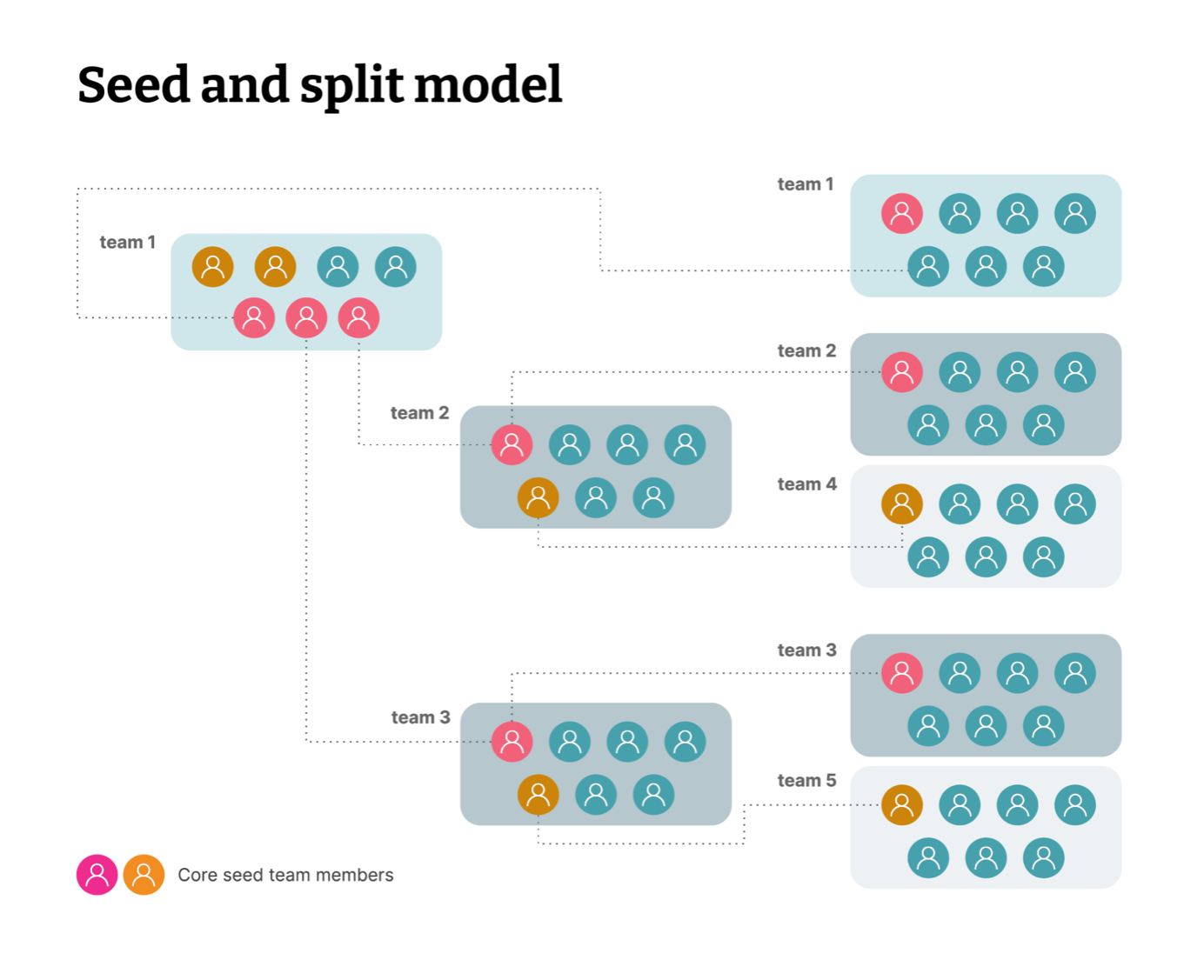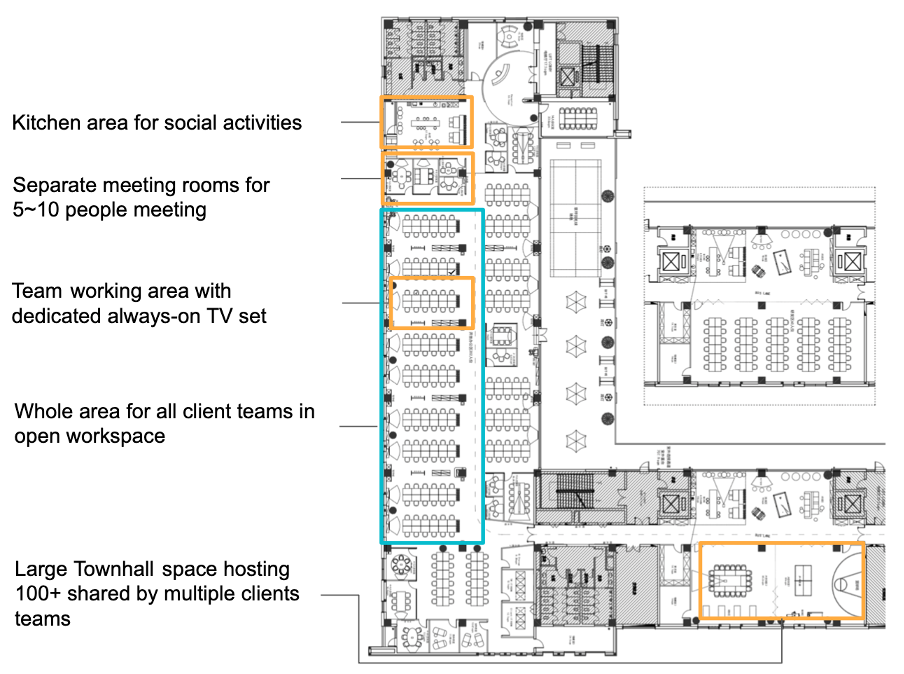Staffing management and Talent Development
Having the right people at the right time is the cornerstone of delivery success. We have seen challenges in this area when a large scale is needed, including how to keep ways of working when newbies are onboarded, etc.
The Seed and Split model has been proven effective here. Placing the seed consultants(usually the experienced team members who join the team from the beginning) from the existing team into the new team helps knowledge transfer and improves team effectiveness.
The graph below shows how to ramp up one team to five teams in this way. Before seed consultants move to the new team, shadowing by replacement members of the old team helps make sure the replacement of the seed role is productive as soon as possible after the seed consultant leaves.


A sample of ramping up from one team to 5 teams with Seed and Split
An important question here is how to make sure the team capability or experience level won’t be compromised when the new comers especially junior colleagues join the team. One of the practical ways from a staffing perspective is by setting up metrics monitoring the consultants’ average profile, especially the tenure. We use two metrics in this case. One is average account tenure - which means how long this consultant has worked for this client on average. Another is the overall industry tenure.
In most cases, stable metrics are to be expected after ramp-up (rather than the longer the better). Rolling off from the team is understandable as consultants may need to pursue other challenges in their career development, different skill sets and experiences are expected to be brought into the team by new blood, etc.
Site Level Risk Control
There was one case that made this a priority. During COVID-19, one of our delivery sites was put into lockdown based on government policy. Unfortunately, the Business Continuity Plan, including working from home, was still in review and not fully approved by the client security and risk control team. Therefore, the remote team had to stop working for a couple of days till the lockdown was over. This case had limited consequences as it involved a small size team. Obviously, the impact would have been huge or catastrophic if it had involved the whole delivery centre with multiple teams. Therefore, having a site based business continuous plan before the actual scaling happens should be a priority. Hope for the best, plan for the worst.
Infrastructure and workspace
Another thing that needs to be managed is the infrastructure that can host the team once it is fully scaled. Usually, it involves two parts: the network matching the team size in the digital world, and workspace planning in the physical world.
Regarding the network, in most cases, VPN between the delivery centre and the client site will be used as it is easy and quick to set up during the kickoff. When it comes to multiple teams, a dedicated line, for example, an MPLS usually will be considered, even if it needs months to plan and extra costs as it pays off by improving stability and performance which will benefit a group of people. In most cases, a site of more than 20 consultants will take this option.
An ideal physical workspace in the delivery centre should be able to give each team a comfortable place to focus on their own work and undertake team level activities, such as separate standup/meetings, and also provide an open space to have some casual conversation and across-team activities (for example, a Townhall space). Here is a floor map in Thoughtworks Xi’an office satisfying both needs.
If relocating the team is to be avoided during the ramping up, a workspace with enough room for all teams should be considered from the beginning. We had some bad experiences - there was a 4-person team sitting in a part of the main floor, which is far away from the large group of people and there were a few items of negative feedback shared (such as Nobody cares for us!) impacting the team morale before we had realized and corrected it.


A Floor map of Thoughtworks Xi’an Delivery Center
Areas highlighted for a large account with 70+ people
Summary
These learnings, focusing on differences between the ramping up and kicking off, are summarized based on journeys to scale the distributed teams. These key practices include roles and responsibilities, culture, communication, talent development, risk control and infrastructure. Although mostly happening between Australia and China, these practices are still with general relevance in other regions.
Thanks to Nicola Boyle (Lead consultant in Melbourne office) for suggesting improvements. This article is also inspired by a few conversations with Jia Xie, Delivery Center Manager in Xi’an office.
Disclaimer: The statements and opinions expressed in this article are those of the author(s) and do not necessarily reflect the positions of Thoughtworks.


















